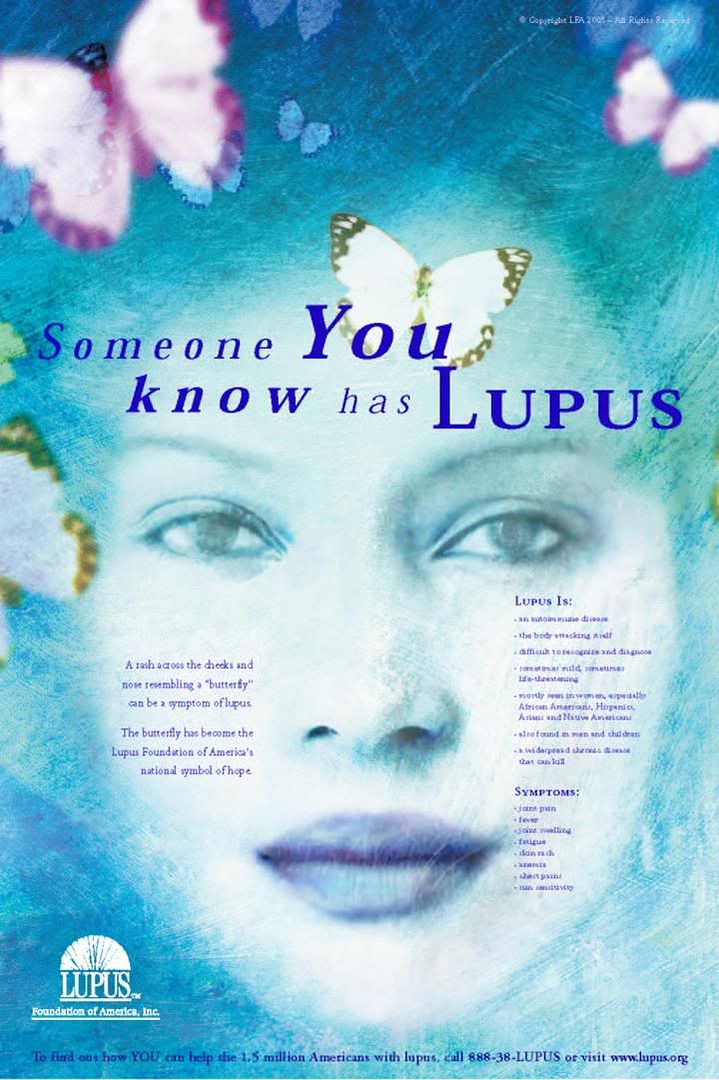 |
|
|
The Many Faces of Cutaneous Lupus Tuesday, March 25, 2008 by Elizabeth Thompson BeckleyRachelle Pamela sought medical attention for a mouth ulcer when she was 19 years old. It took several biopsies, many incorrect conclusions, various treatments, and another eight years before, at age 27, Pamela received the correct diagnosis of discoid lupus erythematosus. Discoid lupus is the most common of the skin diseases that fall under the umbrella of cutaneous lupus. "Cutaneous" means "of the skin." Only about 10 percent of people with discoid lupus go on to develop systemic lupus, but about 80 percent of people with systemic lupus will also have skin problems. Cutaneous lupus can affect the skin in many ways. Rashes, mucosal ulcers (sores in the mucous membranes of the mouth and nose), bumps, and dimpling can be painful or itchy. In some cases, the effects on the skin may result in permanent discoloration, scarring, and hair loss -- aspects of appearance that also can take a toll on the psyche. The various eruptions of cutaneous lupus usually are referred to as lesions. A lesion is an abnormality in tissue or an organ caused by disease or injury. Lesion Lesson There are three types of cutaneous lupus, but not all of them cause scarring. According to David Fiorentino, M.D., Ph.D., assistant professor in the department of dermatology and the department of medicine’s division of immunology and rheumatology at Stanford University School of Medicine in Palo Alto, CA, the main type of scarring is caused by lesions from discoid lupus. Acute cutaneous lupus, which frequently appears as a rash across the nose and face (often called the "butterfly" rash), doesn’t scar, Fiorentino says. Subacute cutaneous lupus doesn’t scar, but can leave white areas where there was a rash and the skin’s pigment has been lost (hypopigmentation) or darker areas where the skin’s pigment has become discolored (hyperpigmentation). "Even though skin problems often are associated with lupus, we can’t always assume the skin rash is related to lupus," Fiorentino says, "but the type of rash can be a signal of how active or inactive the internal lupus is." Further analysis is required to determine an individual’s overall health. Often a biopsy of the affected tissue -- done by taking a tissue sample and examining it under a microscope -- can give more information. For Pamela, now age 40 and an office manager for a trucking company in Concord, CA, aggressive treatment has kept her discoid lupus at bay. She now maintains her skin’s health with a manageable drug regimen of antimalarials and a topical steroid. "I take two pills [chloroquine and quinacrine] in the morning and use a cream [fluocinonide] at night," she says. They’re paid for by insurance, and Pamela reports experiencing no side effects. "That’s the great part," she says. The not-so-great parts are the scarring and discoloration that remain from previous flares, which she describes as "a lot of pits and indented scars" around her lips, chin, ears, and scalp. Treatment Strategies for Skin Fortunately, several effective treatments for cutaneous lupus are available. There also are new drugs in the research pipeline, as well as new techniques for dealing with scars and hair loss. source Labels: Cutaneous Lupus, discoid, skin, ulcer
Comments:
Post a Comment
~~~ |
.:Find Me:. If you interested in content, please contact the Writer .:Want to Joint ?:. If you want to know more about lupus surferer's activities and want to donor your help and money, go here Need more consult ?, go here .:acquaintances:.
The Enterprise .:New Book:. .:talk about it:.
.:archives:.
.:Link-link website Lupus:.
Lupus Org .:credits:.
|